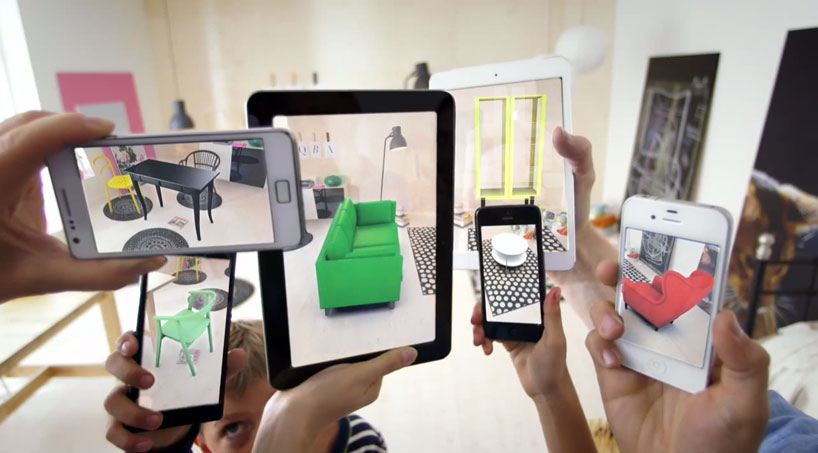Augmented Reality Continues to Outpace VR in Real World Use Cases

Discover what Olivia is talking about from Parenting to Entertainment…
Five years after the release of Pokemon Go, AR technology is revolutionizing travel
In its first iteration during the 1990s, Virtual Reality failed to reach widespread adoption despite being touted as the “next big thing” for many years immediately following its inception. Looking back, it’s easy to see why – the technology was not yet available to provide anything close to the immersion that was being promised by backers of the concept.
Two decades later, a handful of people that had seen their expectations dashed by early Virtual Reality technology had the realization that modern computing power and graphics engines might finally be up to the task. This led to the formation of Oculus, a second-generation VR company that was soon acquired by Facebook and continues to be a leader within the space today. Virtual reality training in Oculus Rift allows for interactive training scenarios where trainees can actively participate and engage with the virtual environment. They can interact with objects, perform tasks, and receive real-time feedback, enabling hands-on learning and skill development.
Outside of gaming, however, Virtual Reality has struggled to find many real-world use cases outside of specialized training tools for pilots, astronauts, and similarly high-end vocations. The technology has long had a cousin with more widespread possibilities, however.
Augmented Reality wasn’t immediately recognized as being the revolutionary technology that it is turning out to be though. Despite the term first being coined in 1990, it was the release of 2016’s “Pokemon Go” that finally shone the spotlight on AR, and the travel industry looks set to be one of the first to be reshaped by the endless possibilities that it offers.
Augmented Reality in the Travel Industry – What’s the Big Deal?
Let’s start with an obvious one – how many of us can honestly say we haven’t struggled with the language barrier whilst holidaying in a foreign country? There can’t be many. The AR mode in Google’s translate application was revolutionary here without a doubt, allowing real-time translation of street and store signs, restaurant menus, product packaging, and much more.
If you’ve never tried it before, give it a go next time you see some foreign text on a food wrapper or instruction manual – simply download the translate app from the App or Play Store on your smartphone, open it and point the camera at the foreign text. You’ll be amazed to see the words reappear in your native tongue directly in place of the alternative language that was visible just moments ago. And this is just the tip of the iceberg.
Getting Around Becomes Easier – Getting Lost, a Thing of the Past
Package holiday companies now regularly provide AR applications to travelers visiting a specific destination that they can open the moment they step off their flight. Simply holding the camera up in front of your field of view will now enable directions and instructions to be overload on top of real-world surroundings, guiding you through the airport, onto your connecting bus, and into your hotel.
Booked tickets for days out or other additional events or experiences? The app will ensure you don’t miss these too. No more relying on local directions, timetables in another language, or hoping that a friendly rep will be on hand when you need them to ensure you don’t miss your pre-booked day out.
There are countless more uses for AR, with live casino games also being an early candidate that is using the technology extensively. The players can choose the sits at the virtual gambling tables, watching the other players and they can even interact with each other. Many of the best ideas probably haven’t even been thought of yet, though – but for many, the visits to the casino have already been changed forever by the use of this amazing technology.
Enhanced City Maps, Virtual Tour Guides, and Restaurant Menus
It’s not just tour operators who are getting in on the act either – as well as making travel timetables and maps easy to understand for visitors who communicate in any number of different languages, it’s possible to add additional information into the surrounding environment that can be updated far more regular than traditional signage.
Virtual tour guides can direct you around cities, showing you the way that things used to look in days gone by – or perhaps adding previews of what buildings that are still under construction are intended to look like when the work has been completed. Those that have visited Big Ben recently have been disappointed to find the entire building covered by tarpaulin, making it impossible to get a view of what the tower actually looks like. AR technology enables the tarpaulin to be removed and the true face of the clock tower revealed once more, just by pointing your smartphone in its direction.
And who hasn’t felt nervous when ordering from a restaurant menu before? No need with AR, you can view your dining choices on the table right in front of you before you even order, giving picky eating children no excuse when the food is finally delivered!
What's Your Reaction?
Discover what Olivia is talking about from Parenting to Entertainment & all of the in between. Activities for Kids, DIY, Health & Fitness, Giveaways & More..



